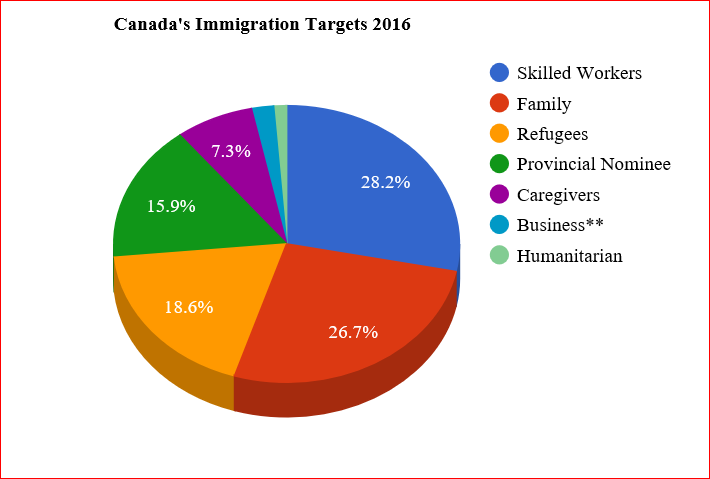Why Canada Wants More Immigrants: It Is An Economic Imperative
“They (immigrants) disproportionately create new companies … The point is, they create jobs.” Governor Stephen Poloz of the Bank of Canada, Feb 1, 2017
Canadians are watching in disbelief and in utter dismay at the dysfunctional U.S. immigration policy. The closing of the immigration doors based upon religion is an anathema to Canadians. In addition to humanitarian grounds, pro- immigration policies make good economic sense. Canada is literally banking on increased immigration to sustain economic growth. According to Stephen Poloz, immigration is expected to account for roughly one-third of Canada’s 1.5 per cent potential GDP growth. Immigration growth is
“A really important ingredient in any economy’s growth story, especially ours, where the demographics are slowing down.”
Not unlike the United States or Western Europe, the native-born Canadian population is aging and exiting the labour force in significant numbers (Chart 1). Overall, the population growth rate has steadily declined in the last quarter of the 20th century, especially with respect to the native-born population. Statistics Canada projects that immigration will continue to be a key driver of population growth—without it the Canadian population growth would be close to zero in less than 20 years. Canada’s demographic point of inflexion has arrived and that means that future growth will rely on future immigration.
Chart 1 Canada’s Population Growth Projections

By the end of 2016, Canada will have admitted nearly 250,000 immigrants, and the quota for 2017 has been increased to 300,000. The Finance Minister has advocated increasing the level to 450,000 annually over the next 5 years on purely economic grounds--- the need to fill requirements for skilled workers (Chart 2). Skilled labour and entrepreneurial workers make up the largest category.
Chart 2 Distributions of Immigrants by Category

Source: Govt of Canada
But what do we know about immigrants and the labour market? Immigrants are younger, eager to enter the work force and have displayed a strong attachment to the job market. Immigrants have a successful record of finding jobs (Chart 3). In part, the discrepancy in the employment growth rates between the native-born and foreign-born, relates to the fact that the native-born working-age population has been declining. Again, these data reinforce the argument in support of greater immigration.
Chart 3 Jobs Gains in Canada, Native-Born and Foreign -Born

Source: OECD
More than 50 per cent of Canadian immigrants are highly educated and well-placed in the labour force. At any one time, there are nearly 100,000 foreign students attending Canadian universities ,some of whom remain on to make Canada their home. Lastly, a high percentage of every province’s immigrants are in the 20-to-44 age group, meaning that the benefits of household formation are spread all across Canada. Studies reveal that , after 10 years, immigrants have a higher proportion of home ownership than native-born Canadians of comparable age. This helps explain why the housing market in Canada has been so resilient during the past five years.[1]
Sadly, Canadians watch the doors close in the United States to economic migrants and political refugees, to the detriment of its longer term prosperity. Fortunately, Canadians have adopted a more open policy and this will pay dividends in the longer run.
______________________
[1] TalkMarkets



